Passenger services
News Mediarail.be
Passenger services > Introduction
The first official passenger service in the world appeared in Great Britain at the inauguration of the Stockton line at Darlington on September 27, 1825. Quite quickly, the English experience was repeated on the Continent with the inaugurations of many passenger services:
- Brussels-Mechelen on 5 May 1835;
- Nürnberg-Fürth on 7 December 1835;
- Paris-Saint-Germain-en-Laye, 24 August 1837;
- Zürich-Baden on 7 August 1847;
- ......
All the inaugurations country by country is included in a table available at this link (in french, but easely understandable). It is important not to confuse the inauguration of passenger services with inauguration of many freight lines which have accepted passenger traffic more later, like Saint-Etienne-Andrézieux in France (inaugurated in 1827). Passenger services are operated through several distinct sub-systems:
- Brussels-Mechelen on 5 May 1835;
- Nürnberg-Fürth on 7 December 1835;
- Paris-Saint-Germain-en-Laye, 24 August 1837;
- Zürich-Baden on 7 August 1847;
- ......
All the inaugurations country by country is included in a table available at this link (in french, but easely understandable). It is important not to confuse the inauguration of passenger services with inauguration of many freight lines which have accepted passenger traffic more later, like Saint-Etienne-Andrézieux in France (inaugurated in 1827). Passenger services are operated through several distinct sub-systems:
The author:
Frédéric de Kemmeter
Railway signalling systems. I'm a rail observer for over 30 years. How has the railway evolved over the decades? Which futur for railways? That's what I'm analyzing and explaining.
Railway signalling systems. I'm a rail observer for over 30 years. How has the railway evolved over the decades? Which futur for railways? That's what I'm analyzing and explaining.

See also:
• My photos on Piwigo gallery
• My YouTube channel
• My blog with latest news
• Follow me on Twitter and LinkedIn
• My photos on Piwigo gallery
• My YouTube channel
• My blog with latest news
• Follow me on Twitter and LinkedIn
Local and regional services
Intercity services
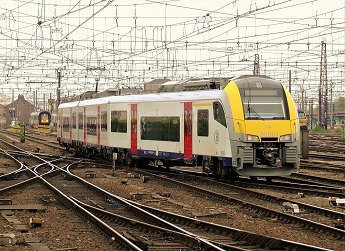
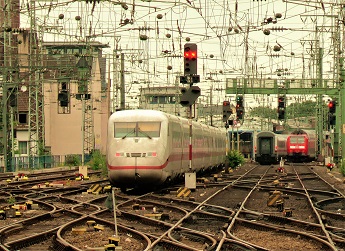
Short-distance train services are at the heart of the story since all passenger services have started as local services. Subsequently, network extensions made it possible to set up 'direct' or 'semi-direct' services, when the regional trains which only stop at a few stations in medium-sized towns. In the 20th century, some large cities have organized specific services with an urban and peri-urban mission, superimposed on the underground, with which there is sometimes confusion: they are called S-Bahn in Berlin, Hamburg or Zürich, RER in Paris, or specific names in London, such as Thameslink, Overground or Crossrail (recently renamed Elisabeth Line).
The local train has often been regarded as a very costly and unprofitable segment, with low occupancy in rural areas. Since the railway reforms in some countries, some of these local services have been transferred to regional or local authorities, which have allocated them to private companies under a public service delegation contract. The European obligation to submit all local and regional services under a tendering contract was voted in december 2016.
The local train has often been regarded as a very costly and unprofitable segment, with low occupancy in rural areas. Since the railway reforms in some countries, some of these local services have been transferred to regional or local authorities, which have allocated them to private companies under a public service delegation contract. The European obligation to submit all local and regional services under a tendering contract was voted in december 2016.
As the speed of the trains grew, the day-trains have rolled over more long distances. This 'express' is neither a local bus or a direct regional train: it only stops at major intermediate cities, such as Strasbourg, Reading, Bern, Düsseldorf, Rotterdam or Newcastle.
At the same time, with the networks extending, it is possible to travel over more long distances but the journey times are such that it was created the night train, which becomes more and more luxurious. Thereafter, the major London-Glasgow, Hamburg-Munich, Paris-Nice or Milan-Rome routes will have both one or more day trains and one or many night train with various intermediate stops.
In order to attract the business customers, in 1957 the national companies created the Trans-Europ Express network, which are fast and comfortable trains linking the major cities of Europe.
The concept of two-class Intercity was adopted in the late 1960s in Great Britain and then transposed in 70's in Germany with, in 1979, an Intercity every hour on all major lines throughout the day. This segment of mainline trains is still active today. Since 1981 in France, 1989 in Germany, 1994 in the Benelux, a network of high-speed trains has been established to become partially the new long-distance railway.
At the same time, with the networks extending, it is possible to travel over more long distances but the journey times are such that it was created the night train, which becomes more and more luxurious. Thereafter, the major London-Glasgow, Hamburg-Munich, Paris-Nice or Milan-Rome routes will have both one or more day trains and one or many night train with various intermediate stops.
In order to attract the business customers, in 1957 the national companies created the Trans-Europ Express network, which are fast and comfortable trains linking the major cities of Europe.
The concept of two-class Intercity was adopted in the late 1960s in Great Britain and then transposed in 70's in Germany with, in 1979, an Intercity every hour on all major lines throughout the day. This segment of mainline trains is still active today. Since 1981 in France, 1989 in Germany, 1994 in the Benelux, a network of high-speed trains has been established to become partially the new long-distance railway.
Stations
Diversity of railways companies
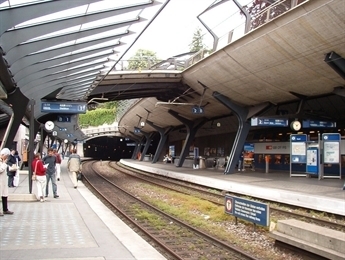
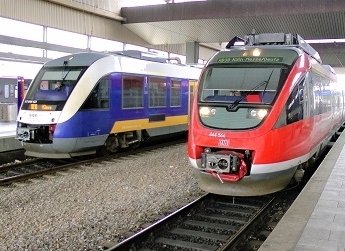
There are no rail services without stations. An interface between the railway and its environment is necessary. The station is the only place in a network where passengers are allowed to board or disembark from a train. The stations today are places of connections with other transports, public and private. They are part of the landscape of the city or municipality they serve. The biggest ones are becoming downtown districts that are increasingly being receive special attention, in terms of comfort, local shops and sustainable development.
Railway landscape have changed. Since the beginning of the twentieth century, all railway passenger transport companies were nationalized companies. The colossal deficits they registered, the lack of interest of the State and the new role of the State's place in the 80-90s paved the way for an overhaul of the railway ecosystem. State monopolies have given way to stricter control of public funds and to the growing power of the transport organizing authorities. Different forms of concession or franchising have made it possible to create new railway companies in Europe.
Customer Relations: Information and Ticketing
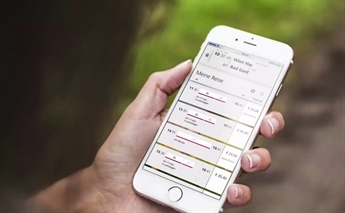
Formerly, the information of the trains was contained in heavy railway indicators of several hundred pages, accessible to all but which required a certain "railway" dexterity to find information. Nowadays, price and time informations has shifted to electronic applications for PCs and smartphones, with publishing of departures / arrivals in real time, station by station. The internationalization of the Internet has erased the borders and now allows you to be informed of all the schedules of the world and possible disturbances. All companies or transport authorities today produce their own digital application and information.
The old card railway tickets is far away. Formerly, it was even necessary to buy one to access to perrons. In 1959, the networks of Europe established the famous Inter-Rail ticket, a revolutionary railway pass that allows to take the train indifferently throughout Europe. Railway tickets gradually take on the format of the IATA neutral paper ticket - from the air sector - to match with the standardization in the travel agency sector. Prices still reflect a strong state regulation and the international tickets were only additions of national prices. Tickets and smart cards, have then been used to travel from one transport mode to another with a single card. The advent of chip card and QR codes announces other forms of distribution. That's for tomorrow ...
The old card railway tickets is far away. Formerly, it was even necessary to buy one to access to perrons. In 1959, the networks of Europe established the famous Inter-Rail ticket, a revolutionary railway pass that allows to take the train indifferently throughout Europe. Railway tickets gradually take on the format of the IATA neutral paper ticket - from the air sector - to match with the standardization in the travel agency sector. Prices still reflect a strong state regulation and the international tickets were only additions of national prices. Tickets and smart cards, have then been used to travel from one transport mode to another with a single card. The advent of chip card and QR codes announces other forms of distribution. That's for tomorrow ...
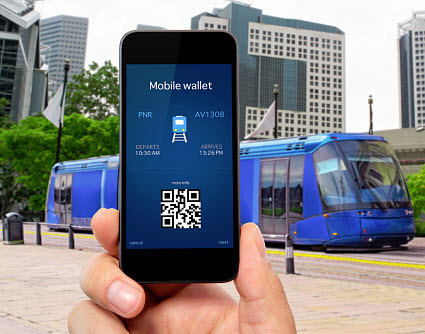








-WEc780af7f81.png)


